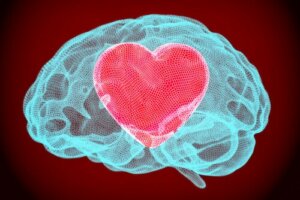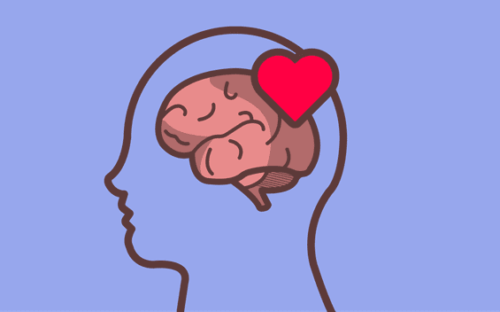The Power of Emotional Self-Regulation

Becoming your own master is the only way to be utterly free. In that sense, in order to be your own master, emotional self-regulation is key. In fact, Epictetus said it about 2000 years ago. It’s difficult to understand that, until 1995, thanks to Daniel Goleman’s work Emotional Intelligence, not many people believed emotions were that relevant. For that reason, researchers in the field of psychology wouldn’t delve deep into them.
However, contemporary neurosciences have highlighted the importance of the amygdala in preparing an impulsive and anxious emotional reaction. Nonetheless, a different part of the brain is responsible for elaborating a more adequate response (Goleman, 1996, p. 50-53). Therefore, emotional self-regulation can be trained.
According to Goleman (1996, p. 61), training your emotions can help you to:
- Have more motivation.
- Persevere in what you want to do despite possible frustrations.
- Control your impulses. Remember that emotions have four ways of manifesting (at a bodily, cognitive, emotional, and impulse level).
- Procrastinate gratifications.
- Regulate your own moods.
- Prevent anguish from interfering with your rational faculties.
- Empathize and trust other people.
The evolutionary cause and the need for training emotional self-regulation
Surely, for our ancestors, developing the ability to quickly respond to danger was incredibly important at an evolutionary level. Luckily, this configuration was imprinted in the brains of all protomammals, including humans.
Mammals’ rudimentary minor brain is the main brain of non-mammals. This brain allows a very rapid emotional response to occur. However, although fast, it’s also very rough and abrasive at the same time.

The cells involved allow rapid but imprecise processing. These rudimentary emotional confusions (based on feeling rather than thinking) are precognitive emotions (Goleman, 1996).
This way, a problem may rise. Believe it or not, the amygdala is often wrong. It receives information in a single neuron in the eye and ear about what we see and hear (at high speed in brain terms) and only a small fraction of the signals collected by those organs reaches it. The vast majority go to other parts of the brain that take longer to analyze the information which, in turn, makes a more precise reading (Goleman, 2015).
Self-regulation and socio-emotional learning
Individuals develop the competences of emotional intelligence with vital learning, which begins in childhood. Social-emotional learning programs offer children the lessons they need as their brains evolve; this explains why professionals state that it adapts to each person’s development (Goleman, 2015).
Furthermore, the brain is the last organ in the body to reach anatomical maturity. It’s actually possible to witness brain development. You just have to observe, year after year, the changes produced in the child’s way of thinking, behaving, and reacting.
Activation of the hypothalamic-pituitary-adrenal axis interferes with cognitive efficiency and learning. If a person focuses on worries, anger, anguish, anxiety, or any other emotion that has a high degree of stress, they’ll have a lower attention span to what others say to them. Emotional self-regulation helps to identify these processes and adjust them to the context of each individual.
On the other hand, if you can control these emotional setbacks, your working memory will increase significantly, which means you’ll have the attention span to store information. Social-emotional learning shows how to manage these unhealthy feelings which, in turn, encourages learning.

How to maintain emotional learning
Emotional self-regulation helps balance emotional setbacks. If you persevere in these learnings, the new circuits will connect and gain more and more strength until, one day, you’ll be able to do whatever you have to do without hesitation.
At that point, the circuits will be so connected and thick that the brain will automatically activate them. When this change occurs, the corrected habit will become the norm (Goleman, 2015).
Of course, adults can apply the same set of skills in their work environment in order to have a better performance. Bear in mind that it’s never too late to improve your competence in the field of emotional self-regulation.
Becoming your own master is the only way to be utterly free. In that sense, in order to be your own master, emotional self-regulation is key. In fact, Epictetus said it about 2000 years ago. It’s difficult to understand that, until 1995, thanks to Daniel Goleman’s work Emotional Intelligence, not many people believed emotions were that relevant. For that reason, researchers in the field of psychology wouldn’t delve deep into them.
However, contemporary neurosciences have highlighted the importance of the amygdala in preparing an impulsive and anxious emotional reaction. Nonetheless, a different part of the brain is responsible for elaborating a more adequate response (Goleman, 1996, p. 50-53). Therefore, emotional self-regulation can be trained.
According to Goleman (1996, p. 61), training your emotions can help you to:
- Have more motivation.
- Persevere in what you want to do despite possible frustrations.
- Control your impulses. Remember that emotions have four ways of manifesting (at a bodily, cognitive, emotional, and impulse level).
- Procrastinate gratifications.
- Regulate your own moods.
- Prevent anguish from interfering with your rational faculties.
- Empathize and trust other people.
The evolutionary cause and the need for training emotional self-regulation
Surely, for our ancestors, developing the ability to quickly respond to danger was incredibly important at an evolutionary level. Luckily, this configuration was imprinted in the brains of all protomammals, including humans.
Mammals’ rudimentary minor brain is the main brain of non-mammals. This brain allows a very rapid emotional response to occur. However, although fast, it’s also very rough and abrasive at the same time.

The cells involved allow rapid but imprecise processing. These rudimentary emotional confusions (based on feeling rather than thinking) are precognitive emotions (Goleman, 1996).
This way, a problem may rise. Believe it or not, the amygdala is often wrong. It receives information in a single neuron in the eye and ear about what we see and hear (at high speed in brain terms) and only a small fraction of the signals collected by those organs reaches it. The vast majority go to other parts of the brain that take longer to analyze the information which, in turn, makes a more precise reading (Goleman, 2015).
Self-regulation and socio-emotional learning
Individuals develop the competences of emotional intelligence with vital learning, which begins in childhood. Social-emotional learning programs offer children the lessons they need as their brains evolve; this explains why professionals state that it adapts to each person’s development (Goleman, 2015).
Furthermore, the brain is the last organ in the body to reach anatomical maturity. It’s actually possible to witness brain development. You just have to observe, year after year, the changes produced in the child’s way of thinking, behaving, and reacting.
Activation of the hypothalamic-pituitary-adrenal axis interferes with cognitive efficiency and learning. If a person focuses on worries, anger, anguish, anxiety, or any other emotion that has a high degree of stress, they’ll have a lower attention span to what others say to them. Emotional self-regulation helps to identify these processes and adjust them to the context of each individual.
On the other hand, if you can control these emotional setbacks, your working memory will increase significantly, which means you’ll have the attention span to store information. Social-emotional learning shows how to manage these unhealthy feelings which, in turn, encourages learning.

How to maintain emotional learning
Emotional self-regulation helps balance emotional setbacks. If you persevere in these learnings, the new circuits will connect and gain more and more strength until, one day, you’ll be able to do whatever you have to do without hesitation.
At that point, the circuits will be so connected and thick that the brain will automatically activate them. When this change occurs, the corrected habit will become the norm (Goleman, 2015).
Of course, adults can apply the same set of skills in their work environment in order to have a better performance. Bear in mind that it’s never too late to improve your competence in the field of emotional self-regulation.
All cited sources were thoroughly reviewed by our team to ensure their quality, reliability, currency, and validity. The bibliography of this article was considered reliable and of academic or scientific accuracy.
Caruso, David R. y Salovey, Peter, The Emotionally Intelligent Manager, Jossey-Bass, San Francisco, 2004. [El directivo
emocionalmente inteligente, Algaba, Madrid, 2005.]
Goleman, Daniel (1996). Inteligencia emocional (4a ed. edición). Barcelona: Kairos.
Goleman, D. (2015). El cerebro y la inteligencia emocional: nuevos descubrimientos. B DE BOOKS.
Mora, F. (2012). 1.¿ Qué son las emociones?. El Observatorio FAROS Sant Joan de Déu (www. faroshsjd. net) es la plataforma de promoción de la salud y el bienestar infantil del Hos-pital Sant Joan de Déu (HSJD) de Barcelona., 14.
Salmurri, F. (2004). Libertad emocional. Estrategias para educar las emociones.
This text is provided for informational purposes only and does not replace consultation with a professional. If in doubt, consult your specialist.







